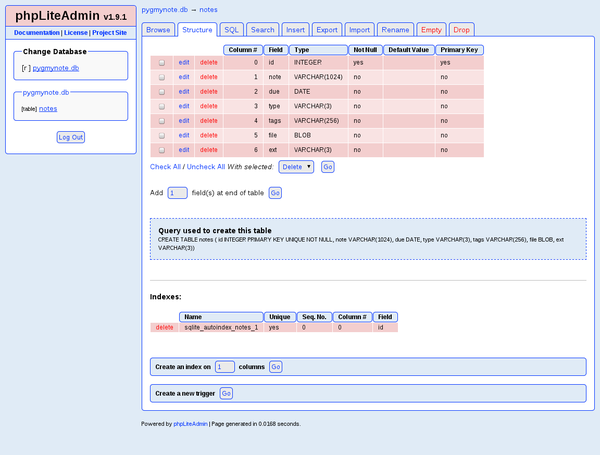

- #How to install sqlite database on a raspberrypi driver#
- #How to install sqlite database on a raspberrypi code#
- #How to install sqlite database on a raspberrypi free#

#How to install sqlite database on a raspberrypi code#
Communications between the client and Nginx occur through HTTP, but then uwsgi takes over as a binary-transport protocol between Nginx and the application server, which interacts with request-handling code such as requestHandler.py (described below). The client could be a browser, a utility such as curl, or a hand-crafted program fluent in HTTP. The database name is arbitrary (e.g., no extension is required), and the command opens the SQLite client utility with >sqlite as the prompt:ĬlientNginxappServerrequest-handling codeSQLite If this succeeds, the command creates the file snowfall.db in the current working directory. Once SQLite is installed, create a database at the command-line prompt: % sqlite3 snowfall.db There is no database server to start, stop, or otherwise maintain. This database system is a collection of C libraries and utilities, all of which come to about 500KB in size. On a Debian-based system, you can install SQLite the usual way (with % representing the command-line prompt): % sudo apt-get install sqlite3 The Nginx web server "speaks" uwsgi out of the box.įor convenience, I will use "uwsgi" as shorthand for the binary protocol, the application server, and the very lightweight web server. uwsgi is a binary protocol implemented by a uWSGI application server to communicate with a full-featured web server such as Nginx it also includes utilities such as a lightweight web server.A uWSGI application server's main job is to translate HTTP requests into a format that a web application can consume and, afterward, to format the application's response into an HTTP message. uWSGI implements the WSGI interface by providing an application server, which connects applications to a web server.This specification defines an API whose implementation is left open. WSGI is a Python specification for an interface between a web server on one side, and an application or an application framework (e.g., Django) on the other side.Here's a sketch of the three principal ones: Various acronyms describe the uWSGI option. In general, CGI technologies are not fast by modern standards, but CGI performs well enough for department-level web applications such as this one. The snowfall application involves a low to moderate volume of hits on the web server and database system.It can be used as either a lightweight concurrent web server or the backend application server connected to a web server such as Nginx. One option is uWSGI (Web Server Gateway Interface), which updates the ancient CGI (Common Gateway Interface) from the 1990s. There are options for connecting Python scripts with Nginx and other web servers.
#How to install sqlite database on a raspberrypi driver#
Python includes a software driver for communicating with SQLite. Python (version 3) comes with Linux and macOS systems. Python: The Python programming language can interact with databases such as SQLite and web servers such as Nginx.

A more powerful (but still free) option is PostgreSQL. SQLite is likely the most widely used database system in the world, and the source code for SQLite is in the public domain. SQLite is lightweight but also ACID-compliant it is suited for low to moderate volume. SQLite relational database system, which is file-based: A database, which can hold many tables, is a file on the local system.This web server is easy to install, configure, and use.
#How to install sqlite database on a raspberrypi free#


 0 kommentar(er)
0 kommentar(er)
